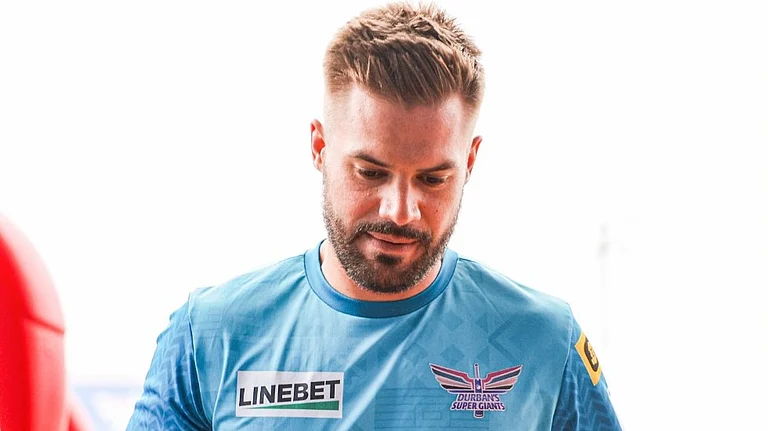The true essence of martial arts lies in the journey of self-discovery that one embarks on—mentally, physically, emotionally and spiritually. Above all, there are very few other sports that can teach you to kick ass and be badass at the same time. Mostly designed for self-defence, those trained in martial arts say that it empowers you with an unbreakable warrior spirit to conquer all kinds of adversities. More often than not, martial arts is associated with karate, kung fu and Shaolin monks. But closer to home, there are a variety of forms and techniques that you can dive right into when you travel to these states.
Silambam, Tamil Nadu
Originating in Tamil Nadu, silambam, is one of the oldest self-defence techniques out there. One can even find references of this ancient form of martial arts in the Sangam Literature. Silambam mainly involves stick fighting and was successfully used against the British army in the 18th century. Eventually, the fighting technique evolved into performance art, almost like jallikattu, and was showcased on occasions like Pongal.
While natives initially used sugarcane sticks, the sport involves the use of weapons made from bamboo. One needs flexibility, swiftness, hand-eye coordination and a total of 16-step footwork to master this art form. Head to Silamboli Silambam or Tholkalai Silambam to learn a few moves.
Kuttu Virasai, Tamil Nadu
Under the umbrella of Silambam is the unarmed martial arts known as Kuttu Virasai. Also established in the state of Tamil Nadu, it is a precursor training with an aim to advance the student towards Silambam. What is accomplished with sticks in the later stages, are first ingrained in the students’ movements with their bare hands. This formal training is a type of unarmed combat. Kuttu, in fact, literally translates to 'empty-handed'. Raw animal activities and actions lend to the performers' postures and movements. Grappling, throws, locks, striking and punches build the basis of the martial art form. Footwork — in this case, known as Kaaladi — is essential to the skills. Many months of this preliminary training are dedicated to perfecting the footwork. Only upon mastering the techniques of Silambam with merely their hands do the performers receive the right to work with a stick.
Gatka, Punjab
The Sikh community’s gatka is historically associated with the Sikh gurus. Traditionally practiced using wooden sticks called ‘khutka’, it’s an amalgamation of acrobatics and sword fighting. This art form was successfully used in the 16th and 17th century, when Sikh soldiers were battling against Mughal aggression. Since it was relatively violent, the sport was banned during the British regime. Gatka, as we know it today, dates back to the 19th century, when it was divided into two parts—rasmi (traditional) and khel (sport). Gatka practitioners, called ‘nihangs’, distinguished by their ‘dastar bunga’ (high turbans) and extensive use of war quoit, have passed the art form from one generation to the next. Guru Har Gobind Singh, the 10th Sikh guru is considered one of the greatest gatka warriors of all times.
Mardani Khel, Maharashtra
Another armed sport, with roots in Maharashtra, mardani khel has lately intrigued the curiosities of many. An art form indigenuous to Kolahpur, mardani khel honours the Maratha culture and involves 14 ways to wield a sword, a stick and other weapons. The performers usually carry a ‘fari’ or a leather shield, daggers, lathis, sword and madu (boomerang). Back in the day, senior practitioners known as ‘vastads’ were directed to establish ‘talims’ or training centres to prepare the young fighters for the war. When the British resisted the practice and use of weapons, the martial art technique was turned into a folk game to ensure its survival. What was once considered a dying tradition has today found fame and recognition, especially on the silver screen.
Thang Ta, Manipur
Thang Ta or huyen lallong is an ancient form of martial arts from Manipur. While its origins lie in the Meitei race, who used the technique to protect their kingdom against foreign invasion, it eventually became an expressive art form. The fighting technique is not only characterised by inter-clan and inter-tribal warfare but it also allowed warriors to hone their skills in times of war and peace. Today, thang ta is not only popular as a form of martial art but also as a technique used in theatre and dance. Thang-Ta Martial Art Of Manipur, a film produced by IGNCA traces elements of this art against the backdrop of its spiritual character.
Thoda, Himachal Pradesh
Diverging a bit from swords and sticks, Himachal Pradesh’s thoda, relies on one’s archery prowess. Considered more of a dance form than a martial art technique, it was performed by the Rajput warriors in the districts of Sirmour, Shimla and Solan. The origins of the sport date back to the great epic of Mahabharata. Played between two teams called ‘paasha’ and ‘saatha’, who are believed to be the descendants of Pandavas and Kauravas, thoda is organised during Baisakhi. A few years ago, the state government announced the inclusion of the sport in rural games at the Rihali fair, in an attempt to preserve ancient culture and customs. With deep roots in Indian history and mythology, there’s a plethora of martial art forms that continue to exist even today in the remotest interiors of the country. While some are on the verge of dying, others seem to have a loyal fandom.





















